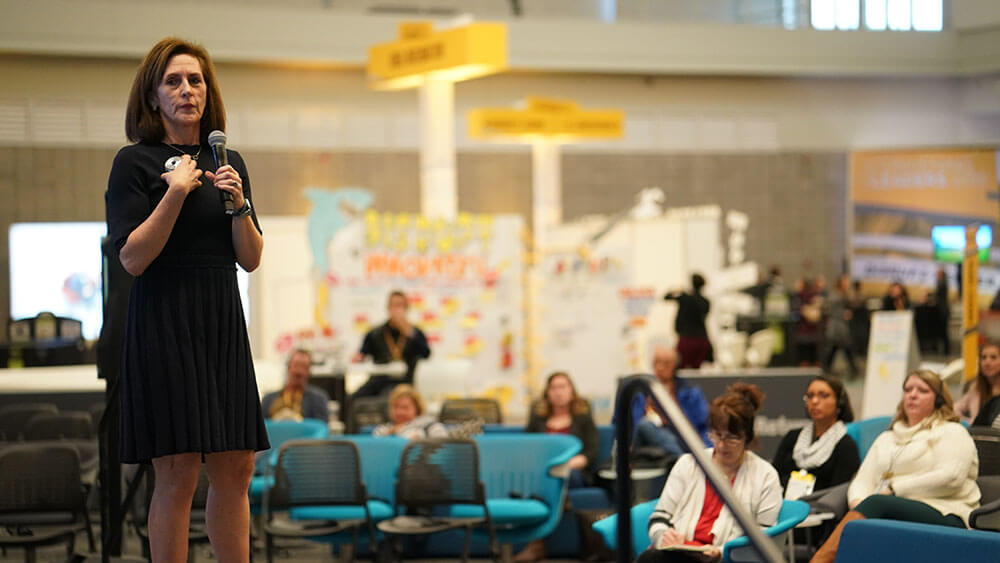
Kati Quigley, senior director of marketing at Microsoft, speaks Jan. 9 about “How Big Tech Fosters Diversity and Inclusion” at Convening Leaders. (Jacob Slaton)
Now three CEOs deep into its 40-year history, technology giant Microsoft has moved the focus on diversity and inclusion to the top of its agenda, said Kati Quigley. The senior director of marketing for Microsoft’s Business Applications and Industry division and a former PCMA Board of Directors chair, Quigley shared the story of Microsoft’s culture journey during the Jan. 9 session “How Big Tech Fosters Diversity and Inclusion.”
Creating diverse and inclusive workplaces isn’t just a “nice” thing to do. It’s good for business, Quigley said. Getting there requires investing in a company’s culture and in its employees.
At Microsoft, “it’s about seeking employees out and figuring out how we, as a company, can make things better for our employees, to help them reach their full potential,” Quigley said. “All of that ladders up into making a difference.
“I’m an introvert and people are shocked by that. I get my energy by being by myself and then I’m ready to go out and get to work,” she said. “You can’t take at face value who someone is. There is more behind that. To have a diverse and inclusive environment, you need to know more about a person than just their title.”
How has Microsoft put culture into action? Compensation is assessed by looking at the employee’s business impact, his or her ability to leverage others’ work and to make others look good. The company’s diversity and inclusion initiative has led to new hiring processes, including for people who have autism. Unfortunately, Quigley said, many individuals with autism have great talent, but are challenged by typical interview and onboarding processes. Microsoft has changed the dynamics of both to make it easier for these individuals to compete for jobs.
Microsoft’s most recent mission statement is “Empower every person and every organization on the planet to achieve more.” While it’s a fairly new statement, it returns the company to its roots under founder Bill Gates, Quigley said.
But diversity and inclusion efforts are not just directed at employees. The culture is apparent in Microsoft’s products as well. This includes the Xbox Adaptive Controller, designed to make gaming easier for people with physical and intellectual disabilities.
Making people feel comfortable is part of the company’s “customer obsessed” mindset, said Quigley, who added that includes making individuals feel comfortable at business events.
“There are certain settings at events that I don’t like, such as big receptions,” Quigley said. “At Microsoft events, we work to make people comfortable and help them engage like they would on a normal day. No matter what your style and approach to learning is, we want you to be comfortable.”
Charting a course for diversity and inclusion is doable, she said, and can be achieved by keeping “all oars in the water” to make sure everyone is going the same direction at the same pace, having a purpose-driven mission, being aware of the “invisible,” which considers the things you don’t know about another person, and staying humble.
In the end, Quigley, said, quoting Microsoft CEO Satya Nadella, “If we don’t look like the world, then how can we serve the world?”
Convene content partner Ascent wrote this story.
